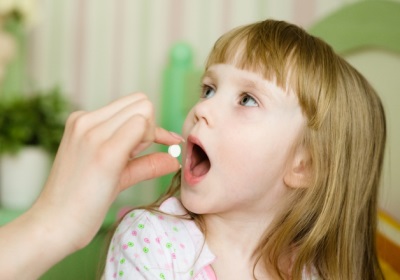E. coli in the urine of a child
When bacteria are detected in a child's urine, it is alarming for parents. But is it necessary to worry if the analysis showed the presence in the urine of E. coli, because this microorganism lives in the human intestine? How can E. coli get into the urine and what should be done when they are detected?
What analysis is detected?
General analysis of urine can only show that bacteria are present in the sample, and it is possible to find out what species microorganisms belong to only by bacterial examination.
Norm
In healthy children, E. coli are found only in the intestine, participating in food processing. In the urine, these microorganisms should not normally be detected.
However, if the analysis determined the number of sticks in one milliliter of urine to 105 units (and in the presence of complaints, to 104), this also refers to the variant of the norm.
Perhaps the analysis was incorrectly collected?
Incorrect collection of urine samples for research is one of the common causes of the appearance of E. coli on the blank of the results. These microorganisms from the intestine can fall on the skin of the perineum.
If the child is badly washed away, E. coli can easily get into the container with the collected urine. That is why the toilet of the external genital organs of the child should be thorough, and the collection of urine should be carried out in a sterile container.
For greater accuracy of the result, urine can be taken on bakposev using a catheter. So surely the risk of bacteria from the genitals will be eliminated.
Causes of deviations
The main pathological reason for the entry of Escherichia coli into the urine of a child is urinary tract infection. Studies have confirmed that 35-50% of pyelonephritis is caused by these microbes. In addition, this type of bacteria often provokes the development of cystitis and urethritis.
The development of such pathologies contributes to weak local immunity in children. When intestinal sticks enter the child’s urethra and bladder, local defenses do not work. Bacteria adhere to the walls of the urinary tract and cause inflammation.
Additional symptoms for anxiety
Parents may notice such symptoms that occur when E. coli is detected in urine analysis:
- Painful urination. The child may also complain of a burning sensation when he urinates or finishes this process.
- Increased body temperature.
- The appearance of urine unpleasant odor, as well as impurities and turbidity (in the urine may be clots of pus, blood, mucus).
- Pain in the lumbar region, which are most often pulling.
- Frequent urination. The child goes to the toilet up to 8-12 times a day and sometimes cannot bear to go to the toilet.
Treatment
Having detected E. coli in the children's urine, the doctor will first make sure that the analysis was carried out correctly, and if the presence of an infection in the urinary tract is confirmed, prescribe a suitable treatment.
Usually, babies with intestinal sticks in the urine are prescribed drugs of the antibiotic group and uroantiseptics. The dose and duration of admission should be selected by a specialist.
Reviews
Recommendations to take urine from babies for catheter analysis often cause confusion and confusion among parents.To clarify this point, more experienced parents note that the catheter should be used to take a sample from the bladder only by a specialist in a medical facility. The nurses know the depth to which the catheter is inserted, and in the hands of a non-specialist it can cause a deterioration of the child’s condition, injuries and the development of an ascending infection.












